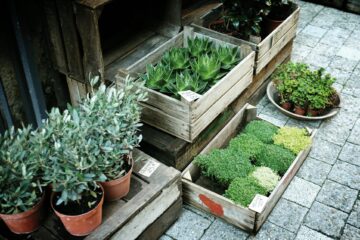As autumn settles in and the days grow shorter, the October garden requires some attention to prepare for the winter months ahead. This transitional period is crucial for ensuring that your garden remains healthy and vibrant through the cold season and comes back strong in the spring. In this article, we’ll discuss ten essential tasks that should be tackled in your October garden.
1. Clean Up Garden Debris
One of the first jobs in your October garden should be to clean up any fallen leaves, dead plants, and other debris. Leftovers from the growing season can harbor pests and diseases that could affect your plants come spring. Consider these steps:
- Rake leaves: Gather fallen leaves and either compost them or use them as mulch.
- Remove dead plants: Pull up any annuals that have completed their life cycle.
- Clean pots and tools: Make sure to wash tools and remove any soil or plant remnants.
2. Plant Perennials
October is an ideal time to plant perennials. The cooler weather helps new plants establish their roots before the frost sets in. Consider these tips when planting:
- Choose healthy, well-rooted plants.
- Make sure to water them regularly in their first few weeks.
- Space them adequately to allow for growth.
3. Divide and Transplant Overgrown Perennials
If you have established perennials that are taking up too much space in your garden, October is a great time to divide them. This process not only helps your plants thrive but also allows you to multiply your garden. Here’s how:
- Choose a dry day to work in the garden.
- Carefully dig up the root clump.
- Use a sharp spade to divide the clump into smaller sections.
- Replant these divisions in new locations or share them with friends.
4. Prepare Garden Beds for Winter
As temperatures drop, garden beds need to be prepared to protect the soil and the beneficial microbes within. Follow these steps to prep your garden beds:
- Clear away any debris from the beds.
- Add organic matter, such as well-rotted compost or manure.
- Consider planting a cover crop to enhance soil quality over winter.
5. Mulch Your Plants
Protecting your perennials and other plants from the harsh winter weather is crucial. A good layer of mulch can help insulate the soil. Here’s how to mulching works in your October garden:
- Use straw, shredded leaves, or wood chips as mulch.
- Apply a layer of about 2 to 4 inches around your plants.
- Avoid piling mulch directly against plant stems to prevent rot.
6. Harvest Remaining Vegetables
Before the first frost arrives, be sure to harvest any remaining vegetables in your October garden. Focus on these tasks:
- Gather late-season crops such as squashes and root vegetables.
- Pick any remaining fruits before they are damaged by frost.
- Consider storing or preserving your harvest for the winter months.
7. Plant Spring Bulbs
October is the perfect time to plant spring-flowering bulbs, such as tulips and daffodils. Follow these steps to ensure a beautiful display come spring:
- Choose bulbs that are firm and healthy.
- Plant them at the recommended depth according to the variety.
- Water gently after planting to settle the soil.
8. Trim and Prune
Pruning and trimming can help promote healthy growth in the next growing season. Here’s what you should focus on in your October garden:
- Trim away any dead or damaged branches from trees and shrubs.
- Prune spring-blooming shrubs after they finish flowering.
- Ensure climbers and vines are neatly secured and trimmed back.
9. Prepare Tools for Storage
Taking care of your gardening tools is essential for maintaining their longevity. Before winter sets in, make sure to:
- Clean and disinfect all your tools.
- Sharpen blades and edges to make them ready for spring use.
- Store tools in a dry place to prevent rust.
10. Plan Next Year’s Garden
With the year coming to a close, it’s the perfect time to reflect on what worked and what didn’t in your garden this year. Consider the following for your October garden:
- Keep a gardening journal to note successes and challenges.
- Research new plants to try or changes to make in your layout.
- Set goals for next season’s garden, such as expanding your vegetable plots or incorporating more flowers.
By completing these essential tasks in your October garden, you are not only preparing your outdoor space for winter but also setting the foundation for a thriving garden when the spring returns. Happy gardening!


